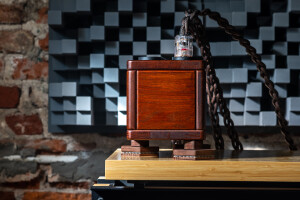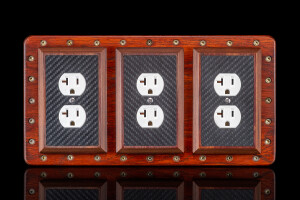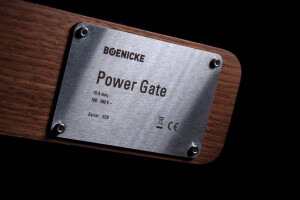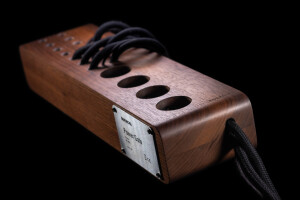This unusual story is the result of a recent experiment conducted just to satisfy my curiosity. Although it originated as an innocent quick hardware swap related to power, the result turned out meaningful enough to share it now. Enjoy!
Silence! Squared!
Team LessLoss have been very busy bees recently. Their intriguing Blackground device developed to relate any tapped AC or DC voltage to ground had its premiere several days ago. A friend of mine who got his hands on 16 of these small square objects described their effect as ‘a psychedelic experience of dramatic magnitude’. Recently we’ve also seen teaser shots of the first LessLoss amplifier effort baptized New Horizons and scheduled to launch somewhere in 2023. For now we know that this upcoming zero-feedback design is going to output 35/70wpc into 8/4Ω and look similarly to the manufacturer’s Echo’s End DAC. Interestingly, it’s also meant for the head-fi crowd and infused with no longer obtainable parts of exploded bandwidth (100MHz), originally designed for non-audio applications. When the time comes I’ll gladly stand in line for these LessLoss loaners, but today let’s get back to the company’s passive power distributor box that recently had its review here. To recap, this purist affair distributes a single wall outlet’s power into six, just like a $5 regular power strip from your local electronics store would, so on utility alone it isn’t unique. However, LessLoss Entropic Process C-Marc wiring and highly efficacious noise-rejecting Firewall bits onboard turn this AC box into a brilliant performer. As such it stomps on throwaway power bars where to us it matters most. The LessLoss Power Distributor doesn’t feature any captive cords, while the Boenicke Audio Power Gate has four, which makes a rather substantial difference in terms of ease of use and retail price. Other than this, however, both are conceptually similar purist power sorters meant for enthusiasts who look beyond conditioners. They share wooden enclosures, quality sockets, C-Marc hookup wiring, multiple Firewall modules and unsurprisingly also similar sound profiles with some minor differences here and there. Since I had both these distributors at my disposal, a window of opportunity revealed itself. I intended to plug one into the other to power my setup, and I had enough C-Marc power cords to do so. If you’re wondering why on Earth I would do that, the reason lies in the Firewall modules integrated within these juice bars. These fine universally applicable parts add up to accordingly ramp up performance, which is hardly any news by now. Today I simply wanted to know whether their action inside two power distributors used together would result in continued positives, or not.
The LessLoss Power Distributor doesn’t feature any captive cords, while the Boenicke Audio Power Gate has four, which makes a rather substantial difference in terms of ease of use and retail price. Other than this, however, both are conceptually similar purist power sorters meant for enthusiasts who look beyond conditioners. They share wooden enclosures, quality sockets, C-Marc hookup wiring, multiple Firewall modules and unsurprisingly also similar sound profiles with some minor differences here and there. Since I had both these distributors at my disposal, a window of opportunity revealed itself. I intended to plug one into the other to power my setup, and I had enough C-Marc power cords to do so. If you’re wondering why on Earth I would do that, the reason lies in the Firewall modules integrated within these juice bars. These fine universally applicable parts add up to accordingly ramp up performance, which is hardly any news by now. Today I simply wanted to know whether their action inside two power distributors used together would result in continued positives, or not. The GigaWatt PC-3 SE EVO+ was my daily driver prior to the Boenicke Audio Power Gate’s arrival. It’s no secret why the Evo had to step down either. Full-fledged conditioners such as this one have the reputation of slowpokes versus passive high-performance power bars without any caps, coils and PCBs inside. After guesting several of the former types at my place, I can only agree. They’re not quite as ripped, controlling and quick, but can be excellent on color, roundness, heft and backdrop blackness. That’s why if I had a thin-sounding, lit-up, overexposed setup in dire need of textural qualities, bloom and softness, I would’ve gladly used a traditional conditioner as a remedy for these issues. Still, if such a product connected to a wall outlet is a touch slow already, adding anything in-between would certainly further obstruct current flow and reduce dynamics… or so I thought. A single standalone Firewall 64x just before the aforementioned Gigawatt did an awful lot to prove me wrong, while one year later, Firewall cylinders further reinforced that point with speakers. These meaningful experiences are the reason why multiple external and internal noise-suppressing LessLoss Firewalls are now mandatory in my setup. Without them it’s not the same and I’ll gladly welcome more as long as audible benefits follow. If reaping them means combining two power bars and seeing what happens, so be it. The ends justify the means no matter how impractical they may seem. But are they really? Ach, that’s the interesting part. It also depends on who you ask.
The GigaWatt PC-3 SE EVO+ was my daily driver prior to the Boenicke Audio Power Gate’s arrival. It’s no secret why the Evo had to step down either. Full-fledged conditioners such as this one have the reputation of slowpokes versus passive high-performance power bars without any caps, coils and PCBs inside. After guesting several of the former types at my place, I can only agree. They’re not quite as ripped, controlling and quick, but can be excellent on color, roundness, heft and backdrop blackness. That’s why if I had a thin-sounding, lit-up, overexposed setup in dire need of textural qualities, bloom and softness, I would’ve gladly used a traditional conditioner as a remedy for these issues. Still, if such a product connected to a wall outlet is a touch slow already, adding anything in-between would certainly further obstruct current flow and reduce dynamics… or so I thought. A single standalone Firewall 64x just before the aforementioned Gigawatt did an awful lot to prove me wrong, while one year later, Firewall cylinders further reinforced that point with speakers. These meaningful experiences are the reason why multiple external and internal noise-suppressing LessLoss Firewalls are now mandatory in my setup. Without them it’s not the same and I’ll gladly welcome more as long as audible benefits follow. If reaping them means combining two power bars and seeing what happens, so be it. The ends justify the means no matter how impractical they may seem. But are they really? Ach, that’s the interesting part. It also depends on who you ask. Prior to any comparisons, I had to first devise a plan on how to isolate my platform’s performance with just one, and then with two distributors on the job. All my components had to be turned off/on after each swap, so convenience clearly wasn’t on the menu this time around. I used just the bare minimum; ISOL-8 Prometheus PSU, Innuos Statement server/streamer, LampizatOr Pacific DAC, Enleum AMP-23R and sound|kaos Vox 3afw monitors. Initially I thought about having a listen to this set powered by the Swiss distributor alone, then adding the LessLoss box before it, having a listen again, then removing it. Rinse and repeat as many times as necessary. That was still a hassle. Since digital products are the most susceptible to any changes related to power, instead of using my entire platform, the scope narrowed down to just the Pacific DAC alone. That way I could turn off/on just one product instead of four and still get telling results. Huzzah!
Prior to any comparisons, I had to first devise a plan on how to isolate my platform’s performance with just one, and then with two distributors on the job. All my components had to be turned off/on after each swap, so convenience clearly wasn’t on the menu this time around. I used just the bare minimum; ISOL-8 Prometheus PSU, Innuos Statement server/streamer, LampizatOr Pacific DAC, Enleum AMP-23R and sound|kaos Vox 3afw monitors. Initially I thought about having a listen to this set powered by the Swiss distributor alone, then adding the LessLoss box before it, having a listen again, then removing it. Rinse and repeat as many times as necessary. That was still a hassle. Since digital products are the most susceptible to any changes related to power, instead of using my entire platform, the scope narrowed down to just the Pacific DAC alone. That way I could turn off/on just one product instead of four and still get telling results. Huzzah! The Boenicke Audio Power Gate powered my setup as per usual and also connected to the LessLoss distributor via one short C-Marc cord, while my DAC saw a 1.5m C-Marc cable that went either into one box or the other. That way I could fairly effortlessly investigate how the Pacific worked fronted by one distributor and two used in series. The cool part was that the Innuos was able to instantly recognize the LampizatOr’s USB receiver, so the total downtime per swap took less than a minute. It turned out that just three rotations sufficed to properly wrap my head around easily traceable, significant sonic shifts. Their rather surprising magnitude is the very reason why this publication actually came to be.
The Boenicke Audio Power Gate powered my setup as per usual and also connected to the LessLoss distributor via one short C-Marc cord, while my DAC saw a 1.5m C-Marc cable that went either into one box or the other. That way I could fairly effortlessly investigate how the Pacific worked fronted by one distributor and two used in series. The cool part was that the Innuos was able to instantly recognize the LampizatOr’s USB receiver, so the total downtime per swap took less than a minute. It turned out that just three rotations sufficed to properly wrap my head around easily traceable, significant sonic shifts. Their rather surprising magnitude is the very reason why this publication actually came to be.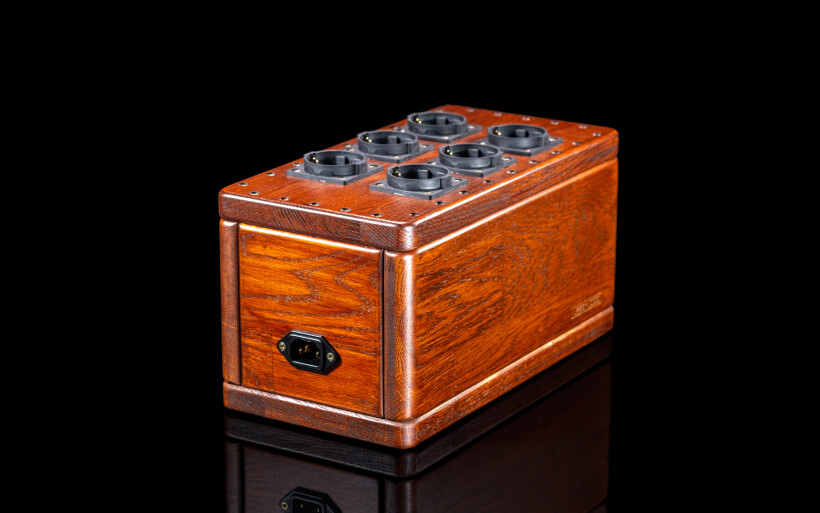 For some extra context, let me start from this quote from my previous LessLoss review: “If I were pressed hard to tell any differences between the LessLoss and Power Gate, there were two. The latter was a bit leaner and rendered key aural shapes closer to my ears so naturally a touch taller. Here the Lithuanian box, you’d think, ought to be more distant, possibly chunkier, slower and less surrounding so spatially not quite as gifted. That wasn’t the case, however. Both products were indistinguishable on slams, energy, willingness to effortlessly move air and reach downstairs. The clear draw on these fronts was the reason why the LessLoss didn’t feel even one bit slower or veiled, while its equally high-tiered articulation didn’t make it any less resolved. If anything, with the Swiss distributor engaged I had the impression of a bit louder SPL in the listening chair, which was more audible than the two other aspects described. From this report’s comparison I gather that Sven’s internal tweaks and soldered connections remove some fatty tissue and slightly elevate tonal balance, while the less radically designed LessLoss makes a touch heftier and romantic sound. Either way, these changes were sideways moves rather than progressions and nowhere near as important as physically functional differences between the two products.”
For some extra context, let me start from this quote from my previous LessLoss review: “If I were pressed hard to tell any differences between the LessLoss and Power Gate, there were two. The latter was a bit leaner and rendered key aural shapes closer to my ears so naturally a touch taller. Here the Lithuanian box, you’d think, ought to be more distant, possibly chunkier, slower and less surrounding so spatially not quite as gifted. That wasn’t the case, however. Both products were indistinguishable on slams, energy, willingness to effortlessly move air and reach downstairs. The clear draw on these fronts was the reason why the LessLoss didn’t feel even one bit slower or veiled, while its equally high-tiered articulation didn’t make it any less resolved. If anything, with the Swiss distributor engaged I had the impression of a bit louder SPL in the listening chair, which was more audible than the two other aspects described. From this report’s comparison I gather that Sven’s internal tweaks and soldered connections remove some fatty tissue and slightly elevate tonal balance, while the less radically designed LessLoss makes a touch heftier and romantic sound. Either way, these changes were sideways moves rather than progressions and nowhere near as important as physically functional differences between the two products.”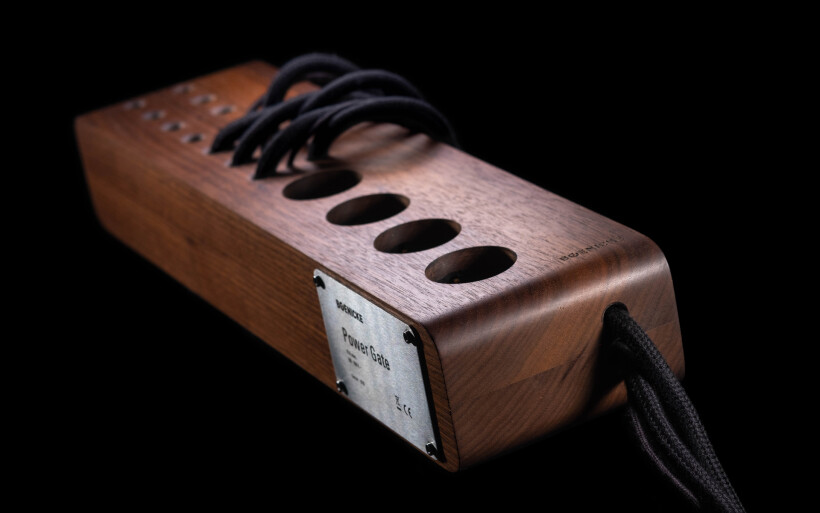 With that out of the way, my DAC powered by the LessLoss distributor and the Boenicke box before it produced extra bass that dug deeper and scored more points on authority, while the resulting stronger and more controlled overall feel morphed each bass-intense song into a noticeably more massive, yet at the same time agile version of itself. The entire landscape rendered by sound|kaos monitors also struck me as a fair bit inkier, more calm and spatially sorted. Tonal saturation went up to make fuller, fruitier sound, which seemed as articulated and brimming with details as ever. Long story short, I saw no downsides to these changes, only improvements. The more I thought about their direction, the more they reminded me about the key differences between Ansuz titanium Darkz T2S decouplers and their pricier Darkz Z2S counterparts made of zirconium. During their comparison the sensibly heftier latter wasn’t any slower, dimmed or chunkier versus the primarily lean agile T2S. The more muscular harder-slamming Z2S also emerged as texturally juicier, fleshier and with the upper hand on tactile vibe and in-room presence. It also delivered finer weightier upstairs. The takeaway of that story was simple. Ansuz Z2S pucks either equaled or surpassed T2S on individual fronts and portrayed music in a more touchable vivid fashion because of that. Upon learning that the LessLoss boosted the Boenicke roughly to that effect, next I had to find out whether this love affair was one-sided or not.
With that out of the way, my DAC powered by the LessLoss distributor and the Boenicke box before it produced extra bass that dug deeper and scored more points on authority, while the resulting stronger and more controlled overall feel morphed each bass-intense song into a noticeably more massive, yet at the same time agile version of itself. The entire landscape rendered by sound|kaos monitors also struck me as a fair bit inkier, more calm and spatially sorted. Tonal saturation went up to make fuller, fruitier sound, which seemed as articulated and brimming with details as ever. Long story short, I saw no downsides to these changes, only improvements. The more I thought about their direction, the more they reminded me about the key differences between Ansuz titanium Darkz T2S decouplers and their pricier Darkz Z2S counterparts made of zirconium. During their comparison the sensibly heftier latter wasn’t any slower, dimmed or chunkier versus the primarily lean agile T2S. The more muscular harder-slamming Z2S also emerged as texturally juicier, fleshier and with the upper hand on tactile vibe and in-room presence. It also delivered finer weightier upstairs. The takeaway of that story was simple. Ansuz Z2S pucks either equaled or surpassed T2S on individual fronts and portrayed music in a more touchable vivid fashion because of that. Upon learning that the LessLoss boosted the Boenicke roughly to that effect, next I had to find out whether this love affair was one-sided or not. Now the two distributors swapped places. So, the LessLoss connected to the wall outlet now powered my entire system with C-Marcs and went into the Boenicke box via its main captive M2 cord. The remaining three M2s were off duty just to make the field leveled. The LampizatOr saw the standalone C-Marc that moved from one distributor to the other as before. The result: all the above observations were still valid as suspected, my DAC fronted by two wooden bars performed audibly better than with just one. More importantly, now I knew that it didn’t matter which distributor device was used first. The conclusion here is twofold. The efficacy of Firewalls inside these products truly piles up. These modules also make a noticeable difference in spite of all the extra contact points and wires along the road. Because of these mechanical obstacles I thought that the two wooden outlets used as described could’ve either crippled sound quality, or made no difference at all. Their Firewall squad, however, showed a middle finger to that guesswork. Live and learn, as they say.
Now the two distributors swapped places. So, the LessLoss connected to the wall outlet now powered my entire system with C-Marcs and went into the Boenicke box via its main captive M2 cord. The remaining three M2s were off duty just to make the field leveled. The LampizatOr saw the standalone C-Marc that moved from one distributor to the other as before. The result: all the above observations were still valid as suspected, my DAC fronted by two wooden bars performed audibly better than with just one. More importantly, now I knew that it didn’t matter which distributor device was used first. The conclusion here is twofold. The efficacy of Firewalls inside these products truly piles up. These modules also make a noticeable difference in spite of all the extra contact points and wires along the road. Because of these mechanical obstacles I thought that the two wooden outlets used as described could’ve either crippled sound quality, or made no difference at all. Their Firewall squad, however, showed a middle finger to that guesswork. Live and learn, as they say.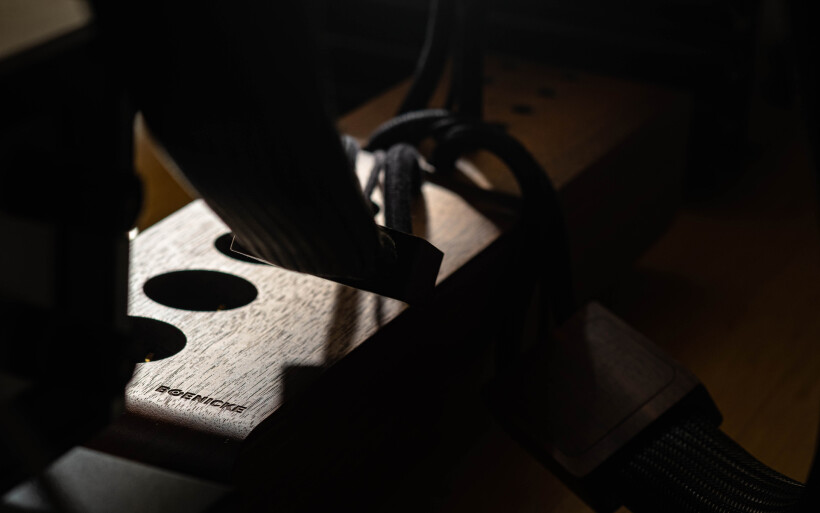 Although my DAC enjoyed the performance boost it got from the two distributors regardless of their order, mild differences were still there. With the Boenicke before the LessLoss the sound was a touch heftier and picturesque, while upon reversing them the balance gently steered towards the leaner more contrasting corner. Since these observations corresponded with each distributor’s own flavor, the Pacific emphasized the one directly connected to it. Let me stress that these subtle mood swings were nowhere near as large as the performance leap between altogether using just one, or two power bars. After covering that base, it was time to tackle one last thing on the to-do list. The LessLoss was before the Boenicke as previously, but I switched to where my platform then received power exclusively from the latter’s captive M2s. In this way, now, all components benefited from the two-box filtering, not just the DAC. That’s how I got the very best results. The LessLoss used ‘only’ as a passive filtering device pushed the performance envelope several notches further in the familiar direction and that made quite the difference. The Lithuanian acted like a sweetener, espresso shot and a drop of lime juice served all at once. It enhanced contrasts, extended the color palette, injected extra blackness into the background and unlocked greater firmness and heft. Just to be clear, the sound|kaos speakers, Pacific DAC and Enleum amp are all radiant quick lean spacious types, so the two combined distributors were a highly synergistic fit for them.
Although my DAC enjoyed the performance boost it got from the two distributors regardless of their order, mild differences were still there. With the Boenicke before the LessLoss the sound was a touch heftier and picturesque, while upon reversing them the balance gently steered towards the leaner more contrasting corner. Since these observations corresponded with each distributor’s own flavor, the Pacific emphasized the one directly connected to it. Let me stress that these subtle mood swings were nowhere near as large as the performance leap between altogether using just one, or two power bars. After covering that base, it was time to tackle one last thing on the to-do list. The LessLoss was before the Boenicke as previously, but I switched to where my platform then received power exclusively from the latter’s captive M2s. In this way, now, all components benefited from the two-box filtering, not just the DAC. That’s how I got the very best results. The LessLoss used ‘only’ as a passive filtering device pushed the performance envelope several notches further in the familiar direction and that made quite the difference. The Lithuanian acted like a sweetener, espresso shot and a drop of lime juice served all at once. It enhanced contrasts, extended the color palette, injected extra blackness into the background and unlocked greater firmness and heft. Just to be clear, the sound|kaos speakers, Pacific DAC and Enleum amp are all radiant quick lean spacious types, so the two combined distributors were a highly synergistic fit for them.
Up until now, I thought that two high-performance power distributors used as above wouldn’t stand a chance against just one, due to what I thought would be purity resulting from less contacts and hardware. Since the former pipeline is longer and busy with extra hurdles, it seemed reasonable to have that point of view. Now my take on the matter has changed. At their core the LessLoss and Boenicke power bars are power cleaners, just disguised as outlet multipliers. Simply put, using two of these über-Firewall types in series trimmed more incoming noise than either of them used alone, and that had a highly positive impact on my system. Although the odds are that yours may respond the same way, just one decent six-socketed power distributor will suffice in most cases and anything above that is pure luxury. This, however, doesn’t change the fact that I can’t forget what I’ve just heard. I don’t really need extra outlets, but a filtering device like these that noticeably improves my platform’s sound is a whole different story…
Associated Equipment:
- Amplifier: Trilogy 995R, FirstWatt F7, Enleum AMP-23R
- DAC: LampizatOr Pacific (KR Audio T-100 / Living Voice 300B + KR Audio 5U4G Ltd. Ed.)
- Speakers: Boenicke Audio W11 SE+, sound|kaos Vox 3afw
- Transport: Innuos Statement, fidata HFAS1-S10U
- Preamplifier: Trilogy 915R, Thöress DFP
- Speaker cables: Boenicke Audio S3, LessLoss C-MARC
- Headphones: HifiMan Susvara
- Speaker signal conditioning: LessLoss Firewall for Loudspeakers, Boenicke ComDev
- Anti-vibration conditioning: 12x Carbide Audio Carbide Bases (under DAC, preamp and speakers)
- Interconnects: LessLoss Entropic Process C-MARC, Boenicke Audio IC3 CG
- Power components: Gigawatt PC-3 SE EVO+/LC-3 EVO, LessLoss C-MARC, LessLoss Entropic Process C-MARC, Boenicke Audio Power Gate, ISOL-8 Prometheus
- USB components: iFi audio Mercury3.0
- Rack: Franc Audio Accesories Wood Block Rack 1+3
- Network: Fidelizer EtherStream, Linksys WRT160N
- Music: NativeDSD
Retail prices of reviewed components in EU:
- Boenicke Audio Power Gate (four M2 cords): CHF 15’580 (excl. tax)
- LessLoss Power Distributor: $4’380 (incl. tax)
Manufacturer: Boenicke Audio, LessLoss






